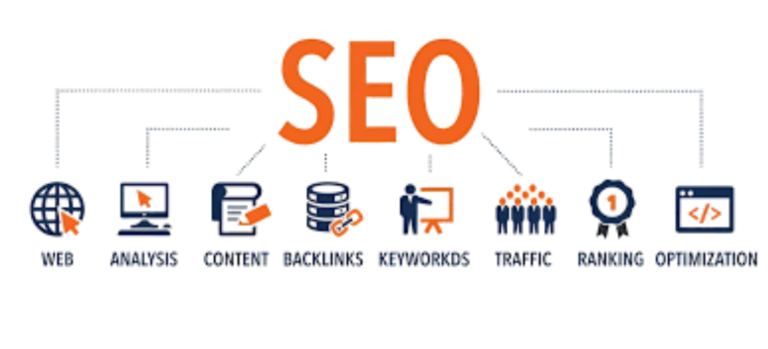How to Start Your Own Marketplace
Starting your own marketplace can be a lucrative venture in today’s digital age. But where do you begin? In this guide, we’ll walk you through the essential steps to kickstart your journey towards creating a successful online marketplace. Whether you’re interested in selling handmade crafts, offering specialized services, or facilitating unique experiences like anniversary flower delivery, launching a marketplace can open up a world of opportunities for entrepreneurs.
What is a Marketplace?
A marketplace is an online platform where buyers and sellers come together to conduct transactions. Unlike traditional e-commerce stores that sell their own products, marketplaces facilitate transactions between multiple third-party sellers and buyers. This model offers a wider range of products and services, allowing buyers to choose from various options and sellers to reach a broader audience.
Why Start Your Own Marketplace?
The rise of e-commerce has created immense opportunities for entrepreneurs to tap into niche markets and cater to specific consumer needs. By starting your own marketplace, you can capitalize on this trend and create a profitable business model that connects buyers and sellers in a streamlined manner. Whether you’re passionate about fashion, electronics, or home decor, launching a marketplace allows you to turn your passion into a thriving business.
Research and Planning
Before diving into the process of building your marketplace, it’s crucial to conduct thorough research and planning to ensure its success.
Identifying Your Niche
Identify a specific niche or industry that you want to target with your marketplace. Consider areas where there is demand but limited competition, allowing you to carve out a unique selling proposition. For example, if you’re passionate about sustainable living, you could create a marketplace that specializes in eco-friendly products and services, attracting like-minded consumers.
Analyzing Competitors
Research existing marketplaces in your chosen niche to understand their strengths, weaknesses, and gaps in the market that you can capitalize on. This will help you differentiate your platform and offer unique value to users. Study their product offerings, pricing strategies, and customer reviews to identify areas where you can outperform the competition and provide a superior user experience.
Understanding Your Target Audience
Gain insights into the preferences and behaviors of your target audience. Understand their pain points and how your marketplace can address them effectively. This will inform your platform’s design and features to better cater to user needs. Conduct surveys, interviews, and market research to gather valuable feedback and insights from potential users, allowing you to tailor your marketplace to their needs and preferences.
Building Your Platform
Once you’ve conducted thorough research and planning, it’s time to start building your marketplace platform.
Choosing the Right Platform
Consider factors such as scalability, customization options, and ease of use when choosing a platform for your marketplace. Popular options include WordPress with WooCommerce, Shopify, Magento, and custom-built solutions. Evaluate the features and capabilities of each platform to determine which one best aligns with your business goals and technical requirements.
Design and User Experience
Invest in a clean and intuitive design that enhances the user experience. Ensure easy navigation, clear product listings, and seamless checkout processes to minimize friction and maximize conversions. Choose a design theme or template that reflects your brand identity and resonates with your target audience. Incorporate elements such as high-quality images, compelling product descriptions, and customer reviews to engage users and encourage them to explore your marketplace further.
Payment Gateways and Security
Integrate secure payment gateways to facilitate transactions on your marketplace. Prioritize user security and data protection to build trust and credibility among buyers and sellers. Choose reputable payment providers that offer robust security features and compliance with industry standards such as PCI DSS. Implement SSL encryption to protect sensitive information and secure transactions, providing peace of mind to users and reducing the risk of fraud or unauthorized access.
Acquiring Suppliers and Sellers
A successful marketplace relies on a diverse range of suppliers and sellers offering high-quality products or services.
Creating Seller Agreements
Draft comprehensive seller agreements outlining the terms and conditions of selling on your platform. Clearly define seller responsibilities, payment terms, and dispute resolution processes to avoid conflicts later on. Establish transparent guidelines for product listings, pricing, and shipping policies to ensure a consistent and positive user experience. Provide sellers with support and resources to help them succeed on your marketplace, such as training materials, marketing tools, and seller analytics.
Onboarding Suppliers
Reach out to potential suppliers and onboard them onto your marketplace. Provide support and guidance throughout the onboarding process to ensure a smooth transition onto your platform. Offer incentives such as promotional opportunities, discounted fees, or access to exclusive features to attract high-quality suppliers and encourage them to join your marketplace. Streamline the onboarding process with automated workflows and self-service tools, allowing suppliers to create accounts, upload product listings, and manage their inventory with ease.
Quality Control Measures
Implement quality control measures to maintain high standards across your marketplace. Regularly review seller performance and product quality to uphold customer satisfaction and trust. Establish criteria for product eligibility, such as authenticity, condition, and compliance with regulatory requirements. Monitor seller activity and user feedback to identify potential issues or violations and take appropriate action to address them. Provide channels for users to report problems or submit feedback, and respond promptly to inquiries or complaints to demonstrate your commitment to customer service and accountability.
Marketing and Promotion
Once your marketplace is up and running, it’s essential to focus on marketing and promotion to attract users and drive sales.
SEO Strategies
Optimize your marketplace for search engines to improve visibility and organic traffic. Conduct keyword research, optimize product listings, and create valuable content to rank higher in search engine results pages (SERPs). Identify relevant keywords and phrases that potential customers are likely to use when searching for products or services in your niche. Incorporate these keywords strategically into your website content, meta tags, and URLs to increase your chances of ranking for relevant search queries. Monitor your search engine rankings and performance metrics using tools such as Google Analytics or SEMrush, and adjust your SEO strategy accordingly to maintain or improve your position in search results over time.
Social Media Marketing
Utilize social media platforms to engage with your audience, promote products, and drive traffic to your marketplace. Leverage targeted advertising and influencer partnerships to expand your reach and attract new users. Create engaging content that resonates with your target audience and encourages them to interact with your brand. Share product updates, user testimonials, and behind-the-scenes glimpses to humanize your brand and build relationships with customers. Encourage user-generated content by hosting contests, giveaways, or challenges that encourage users to share their experiences and showcase your products to their followers. Monitor social media conversations and mentions of your brand or products, and respond promptly to comments or inquiries to foster positive relationships and address any concerns or issues raised by users.
Email Marketing Campaigns
Build an email list of customers and prospects to nurture relationships and encourage repeat purchases. Send personalized offers, product recommendations, and updates to keep users engaged and informed. Segment your email list based on user preferences, behavior, and purchase history to deliver targeted messages that resonate with each segment. Use automation tools to schedule and send email campaigns at strategic times, such as during peak shopping seasons or in response to specific triggers or events. Track the performance of your email campaigns using metrics such as open rates, click-through rates, and conversion rates, and use this data to refine your email marketing strategy and optimize your messaging for better results.
Managing Operations
Efficiently managing operations is crucial to the long-term success of your marketplace.
Customer Support
Provide prompt and helpful customer support to address user inquiries, resolve issues, and maintain positive relationships with buyers and sellers. Offer multiple channels of communication, such as live chat, email, and phone support, to accommodate user preferences. Train your support team to handle common inquiries and resolve problems quickly and effectively. Implement a ticketing system or helpdesk platform to manage incoming requests and track their resolution status. Monitor customer satisfaction metrics such as response times, resolution rates, and Net Promoter Score (NPS) to gauge the effectiveness of your support efforts and identify areas for improvement.
Order Fulfillment
Streamline order fulfillment processes to ensure timely delivery and customer satisfaction. Partner with reliable shipping carriers and implement inventory management systems to track stock levels and manage orders efficiently. Optimize your warehouse operations to minimize fulfillment times and reduce shipping costs. Offer multiple shipping options, such as standard, expedited, and same-day delivery, to accommodate different customer preferences and delivery timelines. Communicate proactively with customers throughout the order fulfillment process, providing updates on order status, tracking information, and delivery estimates. Monitor order fulfillment metrics such as order accuracy, on-time delivery rates, and return rates to identify bottlenecks or inefficiencies and implement corrective actions as needed.







